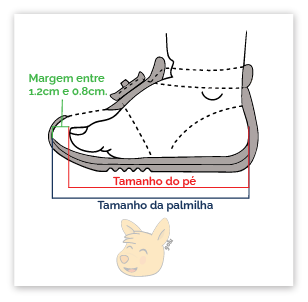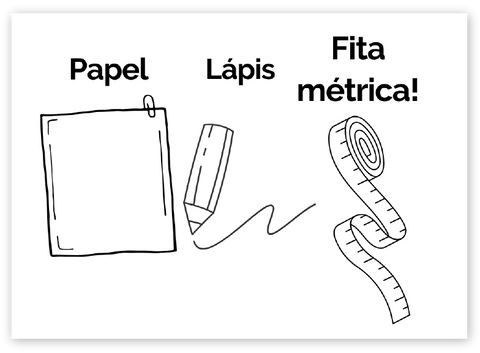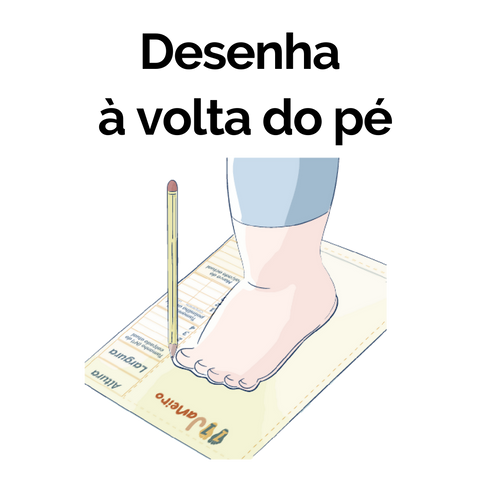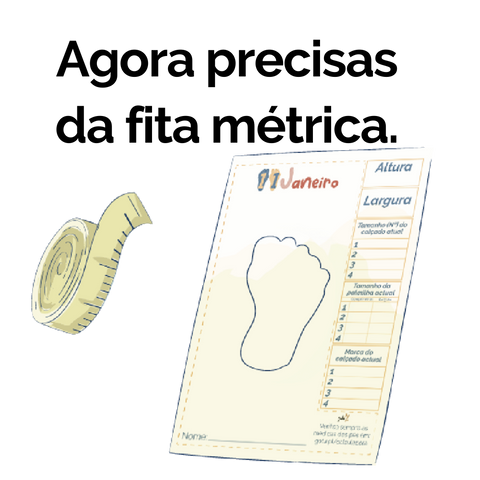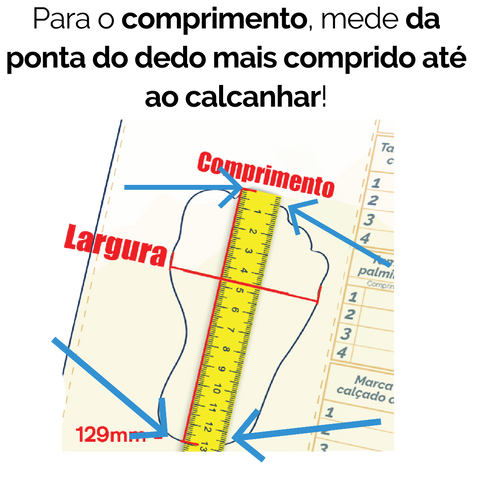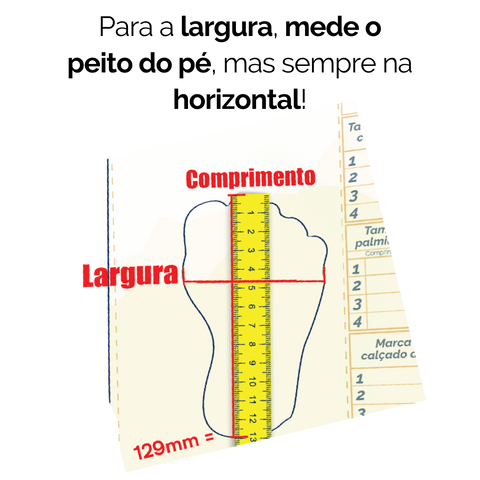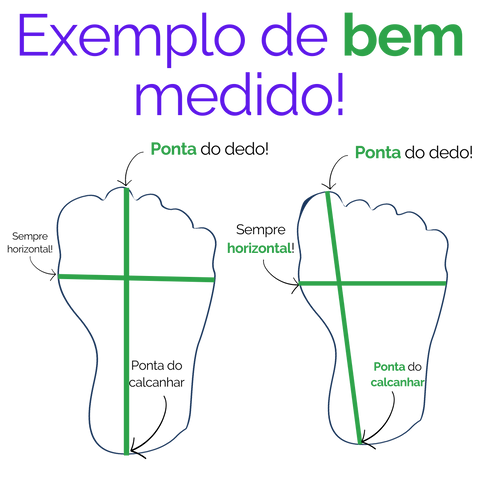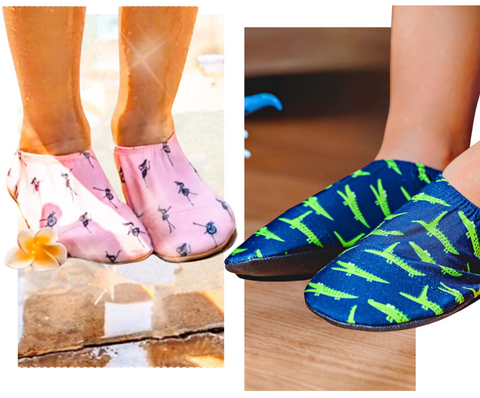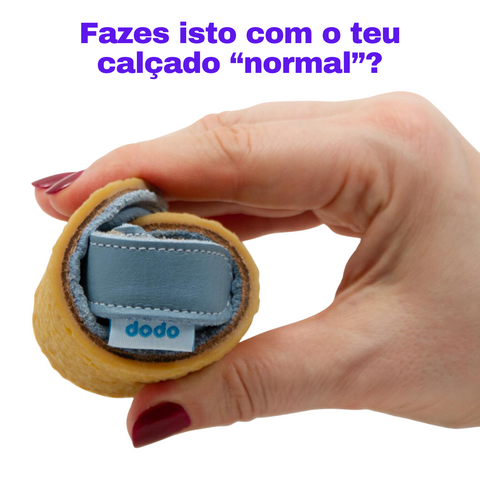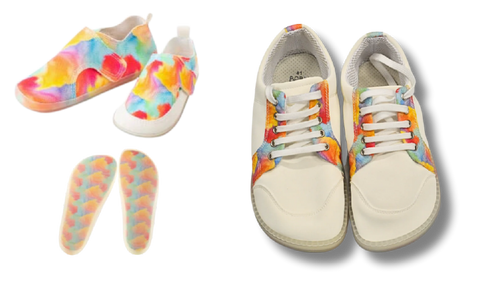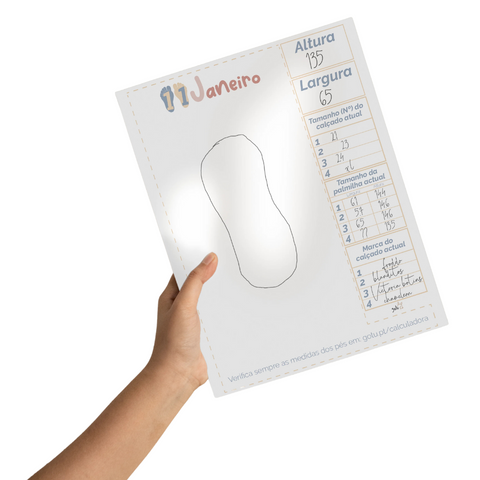Is there a difference between Barefoot Footwear and/or Respectful Footwear?
Yes!
Imagine footwear with three levels: normal footwear, respectful footwear and Barefoot footwear.

Normal Footwear: This is the furthest thing from barefoot footwear! This is the type of footwear you see everywhere, from supermarkets to designer stores. This is footwear that was made primarily for aesthetic reasons and not for the health of your feet. Normal footwear has the following properties: a thin toe where the toes are squeezed (very different from barefoot footwear), a thick sole "to absorb impact" (only important for those who do long-term exercise), and a slope (where the toe of the shoe is lower than the heel).
"First came the normal shoes, then came the foot for the normal shoes."
Respectful Footwear: This is the evolution of normal footwear, but it is not yet barefoot, as it is designed with a little more space inside the shoe. It represents a trade-off between aesthetics and comfort, although we generally consider that (depending on the shoe, of course) it is more advantageous to opt directly for barefoot footwear.
Barefoot Footwear: This is footwear that respects the shape of the foot, generally made with a thin sole, without slope and with plenty of space for the feet. Made from lighter materials, it also requires high quality materials to compensate, being ideal for long walks!
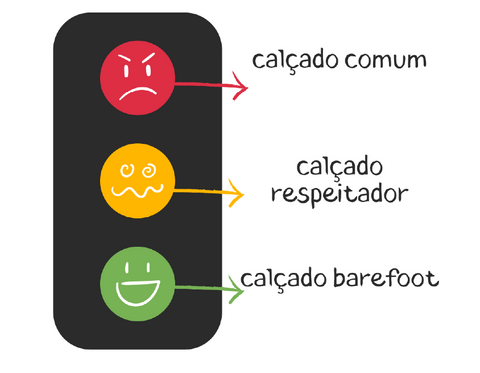
It is normal for barefoot footwear to have some stigma in society to be accepted, after all "only what everyone wears is good", but that is not the case. Unfortunately, this causes several myths about barefoot footwear.
For example, MYTHS:
- "We need normal footwear for support, not Barefoot "
- “Bare feet? You’ll catch a cold with Barefoot !”
- “Barefoot and bare feet spread germs and diseases”
- “Less shoes = Barefoot = more smelly feet”
- “Barefoot makes your feet hurt”
- “ Barefoot = Thin soles = Shoes last less!”
- “Barefoot has no style”
So starting with the first one:
"We need normal footwear for support, not Barefoot"
We comically respond with , "So why don't animals have shoes?"
Humans walked barefoot for thousands of years, and it was only later that footwear began to be used to protect the feet.
A thick, high sole and tight feet is a recent invention.
In these two images, which one looks like a "normal foot" to you?

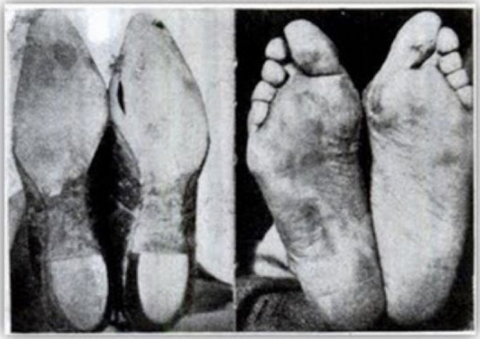
- “Bare feet? You’ll catch a cold with Barefoot!”
No ! Neither cold nor being wet affects a cold.
Colds come from viruses, not from being barefoot, getting cold or having wet feet. This is probably the most common myth people believe.
- “Barefoot and bare feet spread germs and diseases”
At the gym or the pool? Yes, at home? No.
Germs spread much more quickly between hands than between feet, and even then people don’t always wash their hands. However, in places where germs are likely to spread to the floor, you can always use Slip Stop!
- “Less shoes = Barefoot = more smelly feet”
No! Feet do not produce odor, but they do produce sweat. This sweat encourages the growth of certain bacteria that generate this odor. The more your feet are free and able to breathe, the less sweat, the more comfort and the less odor.
- “Barefoot makes your feet hurt”
It only hurts for those who have never worn barefoot shoes , that is, because the feet and legs do not have the muscles necessary for walking. This is caused by muscle atrophy. Just like when you go to the gym for the first time, you need to get used to it.
- “Barefoot = Thin soles = Shoes last less!”
If we're talking about "normal" footwear, yes, it's mass-produced and meant to be disposable. But a lot of barefoot footwear is made with premium materials , as they really need to be durable and flexible for a proper experience.
Dodo footwear is used in this image to show how flexible barefoot footwear is.
- “Barefoot has no style”
Whoever says this has certainly never seen these Baby Cubs.
These baby wolves are sooo cute! Are you going to say no?
Facts about Barefoot Shoes for Babies!
- Babies do not need, nor should they, wear shoes when they are not yet walking, as it is important to let them free to explore their feet and develop their muscles properly.
- Putting shoes on babies interferes with their proprioception and the learning process of standing up and starting to walk.
- Indoors, babies should learn to walk barefoot, even on uneven floors.
- Babies only need to wear shoes when walking outside to protect their feet from dangerous elements.
- When it is not safe to walk barefoot in the park or on the street, you can use attipas, which protect your baby's feet and respect their natural development.
- Respectful footwear, known as barefoot, protects babies' feet without interfering with their natural movements and physiological development, as if they were walking barefoot.
How do you know if a shoe is barefoot?
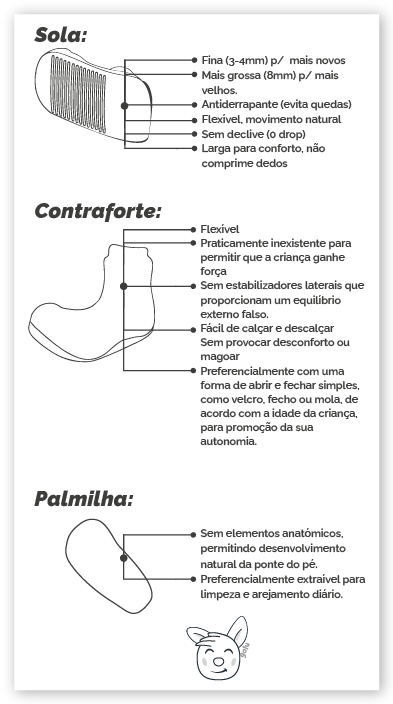
Feet grow and need room to move and grow.
The insole should be 0.8 to 1.2 cm larger than the foot measurement.
Important Measures:
up to 0.8cm – minimum comfortable space
up to 1.2cm – maximum space
